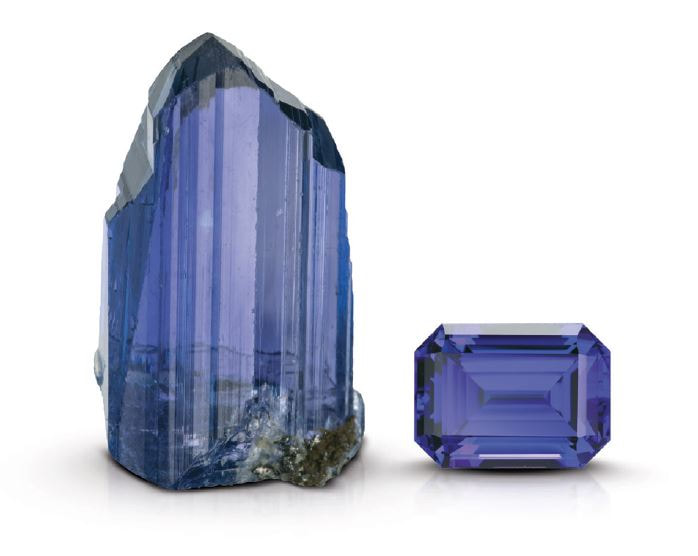TanzaniteA recently discovered gem born in the foothills of Mount Kilimanjaro. Named by Tiffany & Co. after Tanzania, the country
in which it was discovered by a Masai cattle herder in 1967, tanzanite has taken the world by storm and continues to enjoy its growing popularity. Tanzanite is found commercially in only one place on Earth, making it many times rarer than diamonds. Color Tanzanite is the blue to bluish purple variety of the
mineral zoisite. The most prized is a pure blue color, similar to fine sapphire, or an intense violet-blue. Viewing at different angles, tanzanite’s hue may appear violet. In some exceptional tanzanites, the color is predominately an intense violetish blue with red flashes of pleochroic color coming from within the stone. Clarity Gem-quality tanzanite typically has no eye-visible
inclusions. Any inclusions that might pose durability problems—such as fractures—lower tanzanite value greatly. In rare cases, parallel needle-like inclusions may give a stone a cat’s-eye effect. Source The only known source in the world is the Merelani Hills
near Mount Kilimanjaro in northern Tanzania. Treatments The vast majority of tanzanite is heat treated to
transform brownish zoisite into violet or blue tanzanite. The result is permanent. Heat treating brown zoisite converts the brown color to blue or violet hues depending on the orientation of the crystal. Rarely, fracture filling and color coating on the pavilion of a stone gives a desirable but temporary result. |
Natural zoisite is usually brownish green or khaki,
however rarely it will naturally come out of the ground violet-blue. |
All information are courtesy of Gemological Institute of America (GIA). OR DIAMOND are not affiliated with, connected to, or associated with GIA other than selling diamonds and gemstones graded by GIA and have GIA trained staff gemologist and accredited jewelry professional on site.
Images courtesy: David A Brackna; New Era Gems; Thomas M. Schneider





